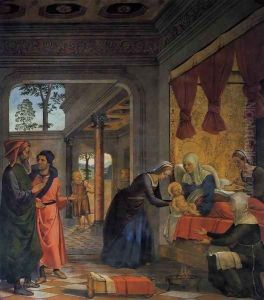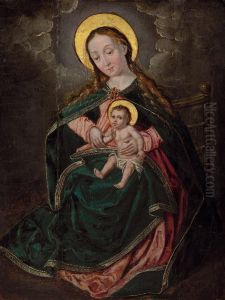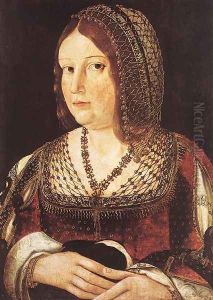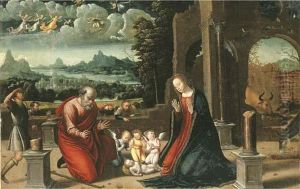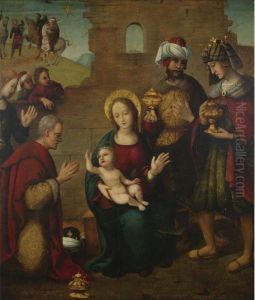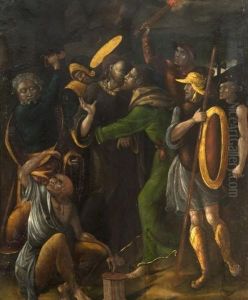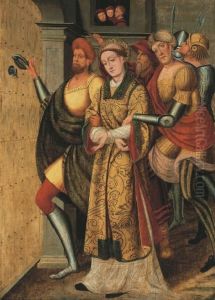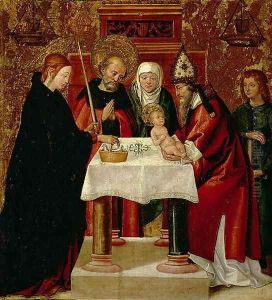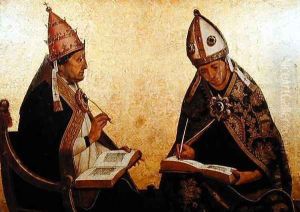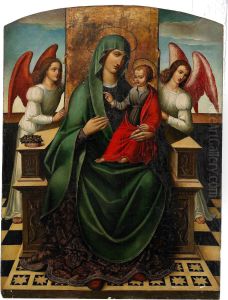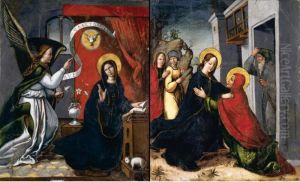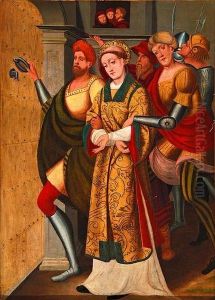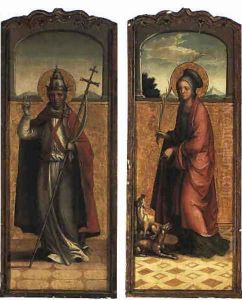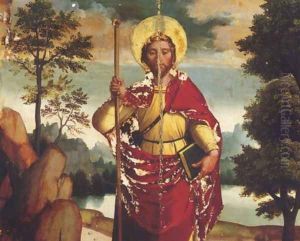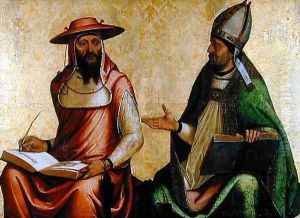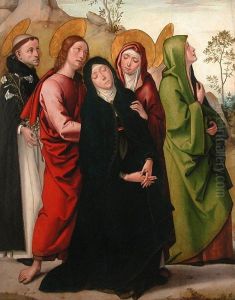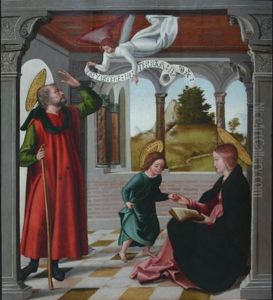Juan de Borgona Paintings
Juan de Borgoña, also known as Juan de Borgoña the Elder, was a significant figure in the Spanish Renaissance art movement. Born around 1470, his exact place of birth remains uncertain, though it is speculated that he may have originated from the Duchy of Burgundy, which today covers parts of modern-day France and Belgium. He is primarily celebrated for his contributions to Spanish painting, particularly in the region of Castile.
Juan de Borgoña's career is notable for the way it reflects the transitory period in European art, bridging the late Gothic and early Renaissance styles. His works demonstrate a keen understanding of Italian Renaissance innovations, likely influenced by his travels or the Italian artists working in Spain during his time. Despite the Italian influence, his artwork retained a distinctly Spanish character, harmoniously blending the two traditions.
By the late 1490s, Juan de Borgoña had established himself in Spain, and he became particularly associated with the city of Toledo. He was commissioned to work on several significant projects, including the Toledo Cathedral and the Hospital de Santa Cruz. His contributions to the Toledo Cathedral are particularly noteworthy, involving a series of frescoes that depict various religious scenes, showcasing his mastery of composition and his ability to convey spiritual narratives through art.
Juan de Borgoña's style is characterized by its vivid color palette, attention to detail, and the emotional expressiveness of his figures. He played a crucial role in introducing Renaissance pictorial techniques to Spain, such as perspective and chiaroscuro, which were groundbreaking at the time and influenced the development of Spanish art.
He died in 1534 in Toledo, leaving behind a legacy that would influence Spanish art for generations. Juan de Borgoña's work remains a testament to the cultural exchange between Italy and Spain during the Renaissance, and he is remembered as a key figure in the evolution of Spanish Renaissance art.
